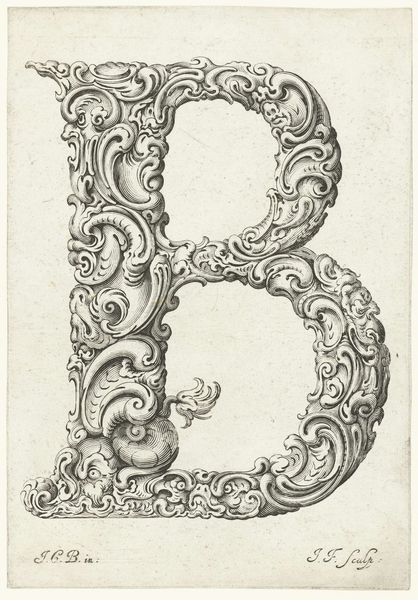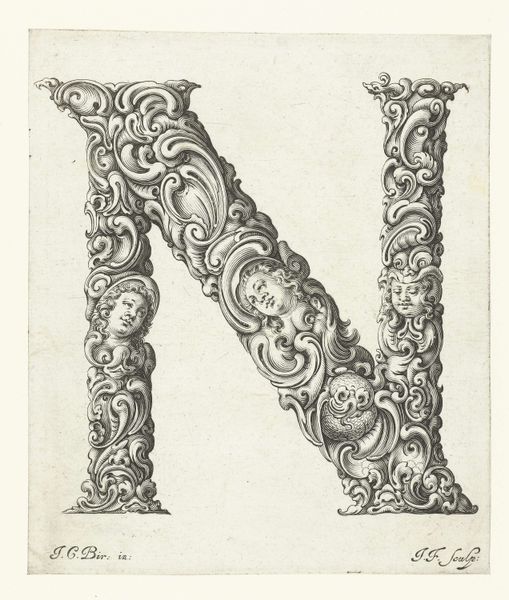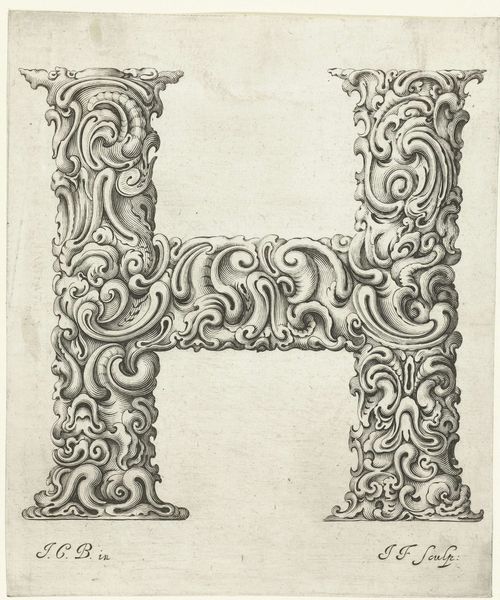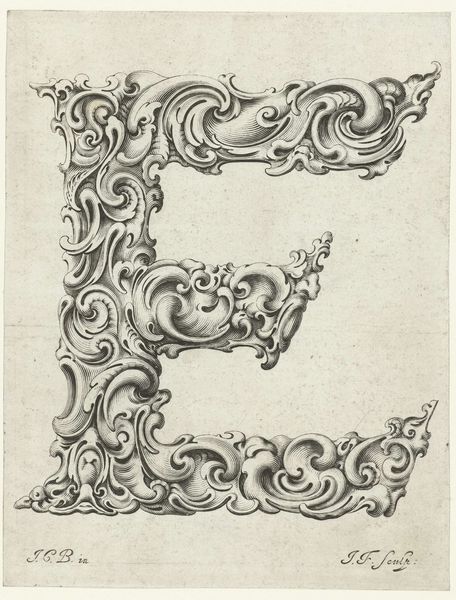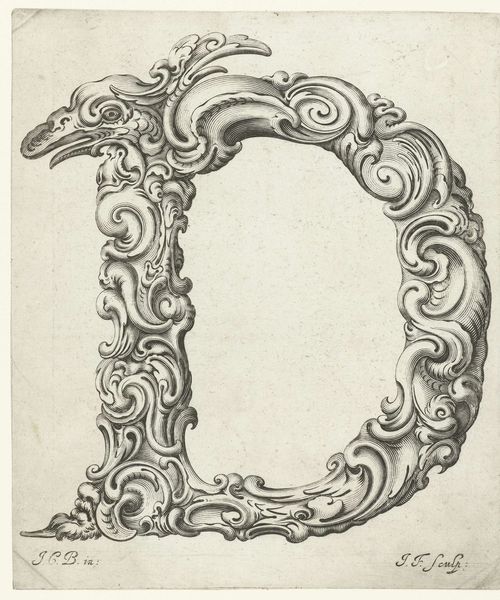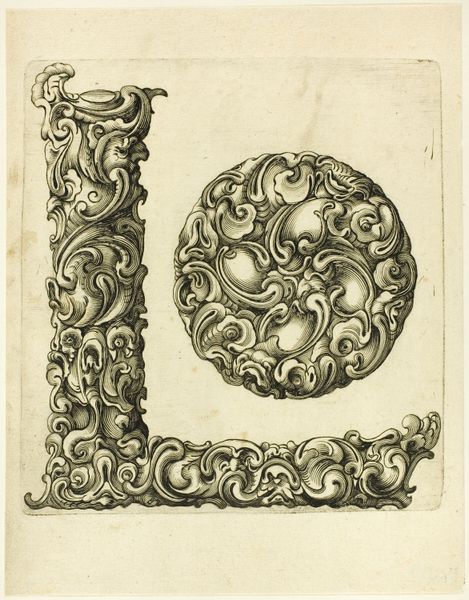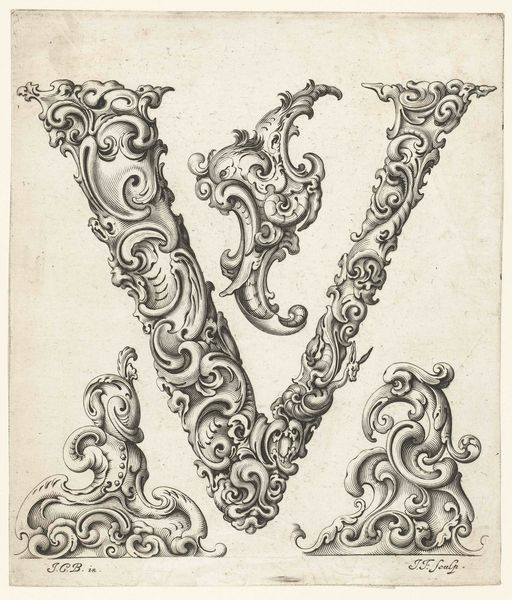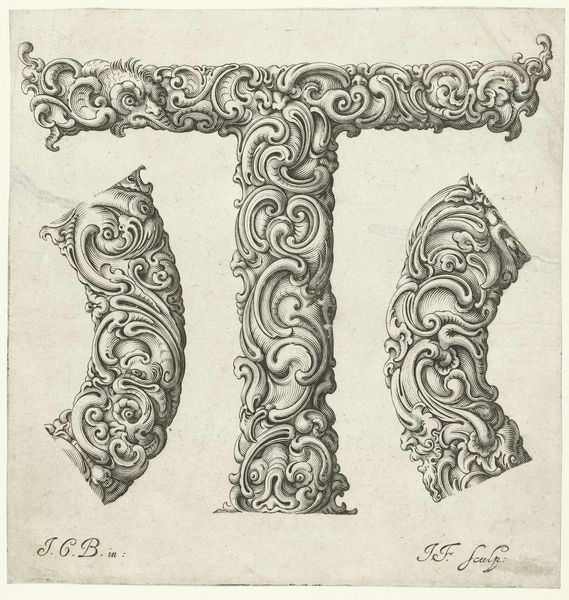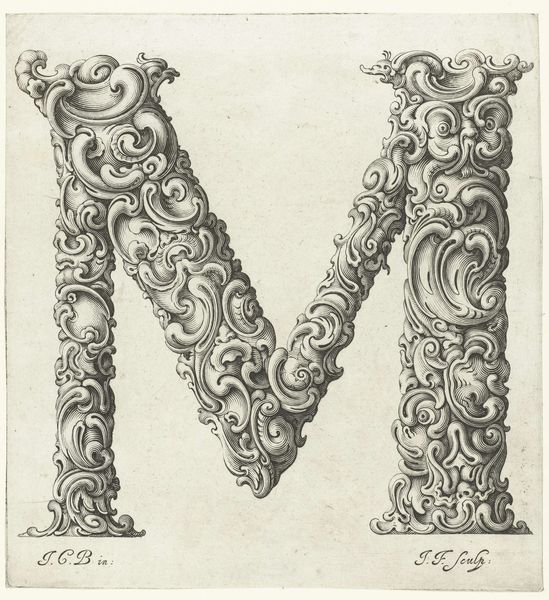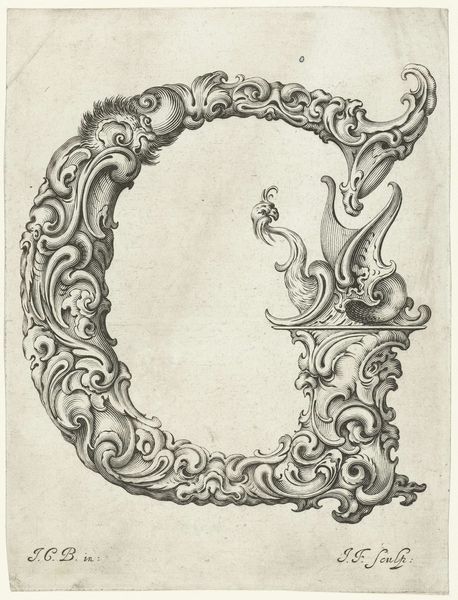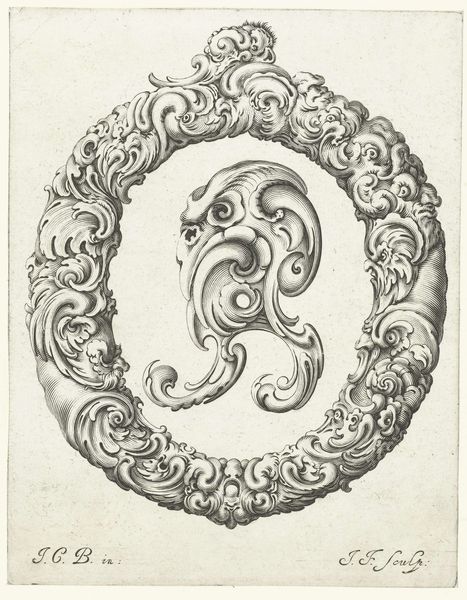
graphic-art, print, typography, engraving
#
graphic-art
#
baroque
#
pen drawing
# print
#
old engraving style
#
typography
#
geometric
#
line
#
decorative-art
#
engraving
Dimensions: height 206 mm, width 177 mm
Copyright: Rijks Museum: Open Domain
Editor: Okay, so here we have Jeremias Falck's "Letter R," an engraving from around 1645 to 1650. The detail is incredible; the whole letter seems to be made of swirling, organic forms. What kind of context helps us understand this piece? Curator: Well, think about the period. The Baroque era. This wasn't just art; it was about power, display, and the Church's attempt to visually overwhelm. How does the artist use decoration here? Is it just pretty, or does it *do* something? Editor: It definitely feels like more than just decoration. All those flourishes and tiny details give it this weighty, almost imposing presence. It feels like it's trying to convey importance, maybe even divine authority? Curator: Exactly! And who was consuming prints like this? Remember, these weren't mass-produced posters. Consider the cultural and religious functions of such imagery in its time, it definitely reflects and enforces a hierarchical worldview. The ornate "R" wasn’t simply a letter; it signified something beyond itself. What kind of imagery do you find in similar political or religious works? Editor: I see that same focus on intricate detail and a kind of overwhelming grandeur. Almost like propaganda, but with a finer touch. A tool for persuasion or a reminder of hierarchy through artistry. Curator: Precisely! The letterform almost dissolves into ornamentation, suggesting the diminishing value of clear communication. This style became almost weaponized, visually and ideologically. Editor: That is fascinating. I didn’t expect something as simple as a letter "R" to be so laden with social and political meaning. Curator: It really prompts us to question what value society assigns to aesthetic or symbolic items when such works were produced for elites and wealthy social circles, it allows us to examine that specific cultural environment.
Comments
No comments
Be the first to comment and join the conversation on the ultimate creative platform.
